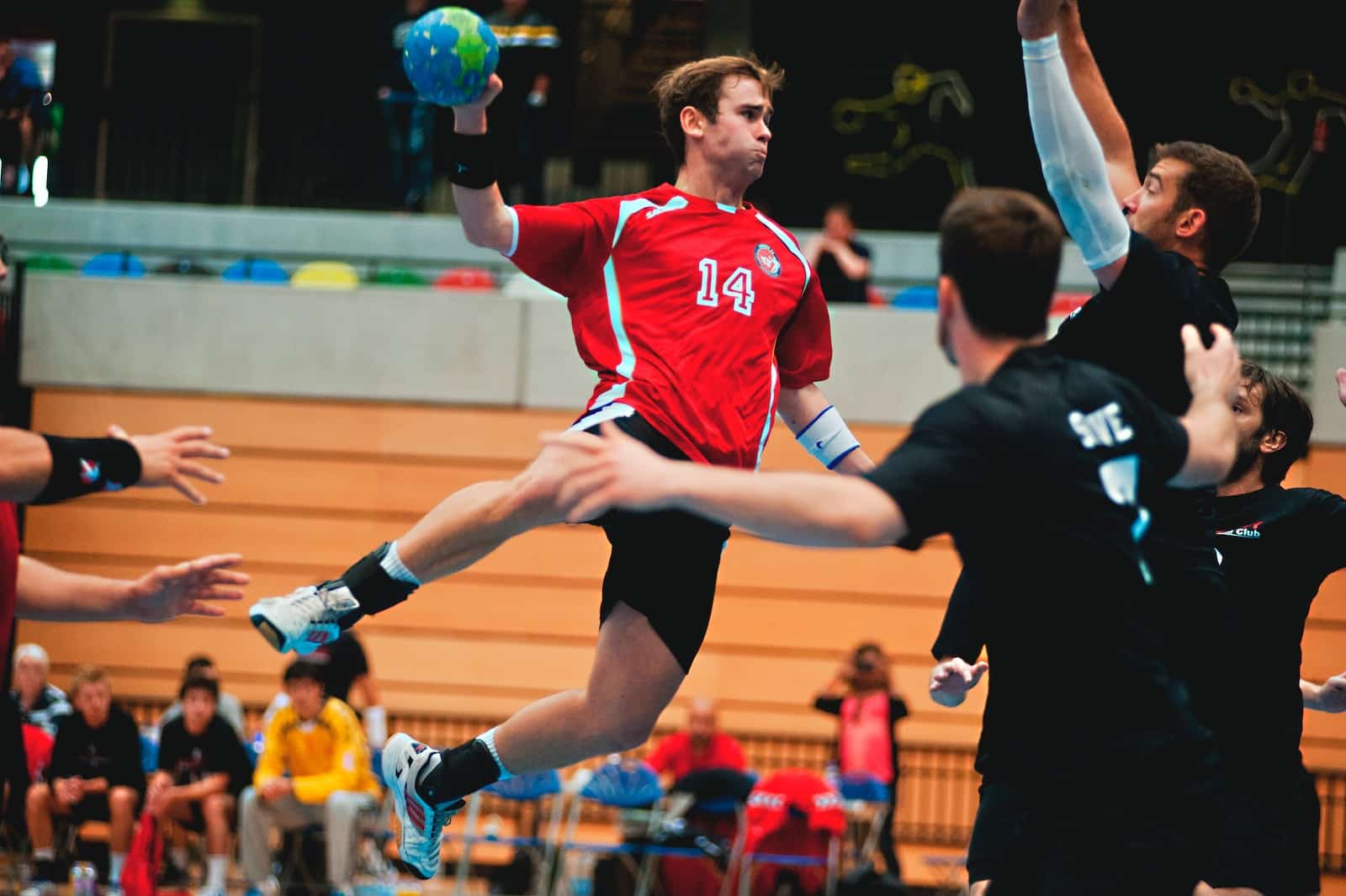Handball: basic rules and strategies

Handball is a fast-paced and exciting game that requires agility, strategic thinking, and teamwork. It’s a sport that has been played in various forms for hundreds of years, but the modern version we know today was first codified in the late 19th century. Whether you’re new to the sport or a seasoned player looking to improve your game, understanding the basic rules and strategies of handball is essential. This article will delve into the fundamental rules of handball and explore some basic strategies that can help teams excel on the court.
The Basics: Rules of Handball
In handball, the objective is simple: score more goals than your opponent in a set period of time. However, mastering the rules can be a little bit more complicated. Let’s examine these fundamental rules.
En parallèle : Tips to improve your golf swing
Handball is a team sport, played with seven players on each side – six outfield players and one goalkeeper. The game is usually played indoors on a court that’s around 40 by 20 meters. The match itself consists of two 30-minute halves with a 15-minute break in between.
The ball, which is smaller than a soccer ball and fits comfortably in one hand, is passed, thrown, or dribbled, with the aim of throwing it into the opponent’s goal. A standard match ball for men’s games has a circumference of 58-60 cm, while for women’s games, the circumference is slightly smaller, at 54-56 cm.
Sujet a lire : The history of martial arts around the world
A key rule of handball is that players are not allowed to take more than three steps without dribbling the ball. Additionally, they cannot hold the ball for more than three seconds without passing, shooting, or dribbling. These restrictions keep the game fast-paced and encourage constant movement and passing.
Another crucial rule is that only the goalkeeper is allowed in the six-meter goal area. Outfield players can jump into this area when taking a shot, but they must release the ball before they land. Any violation of this rule results in a free-throw for the other team.
Fouls are also a significant part of handball. Any dangerous or unfair play, such as hitting, pushing, holding, tripping, or charging, is considered a foul. A player who commits a severe or repeated foul can be given a two-minute suspension, a disqualification, or even a red card, which means they cannot participate in the rest of the match.
Offensive Strategies in Handball
Now that we understand the basic rules of handball, let’s explore some common offensive strategies. These strategies are designed to create scoring opportunities and keep the opposing team on the defensive.
One of the most fundamental offensive strategies in handball is the "breaking through" tactic. This involves a player with the ball attempting to break through the opponent’s defense to get closer to the goal. The player must be quick, agile, and strong to effectively use this strategy.
Another common strategy is the "passing game". This involves passing the ball quickly and accurately between players to confuse the defense and create openings for shots. The passing game requires excellent teamwork and communication, as well as skilled ball handling.
The "pivot" is another key offensive strategy. The pivot is a player who positions themselves near the opponent’s goal, usually in the six-meter area. They serve as a focal point for attacks, receiving passes from teammates and either shooting at the goal or passing the ball to a better-positioned player. The pivot must be strong and have excellent ball control, as they often have to receive the ball under pressure.
Defensive Strategies in Handball
In handball, good defense is just as important as a potent attack. Effective defensive strategies prevent the opposing team from scoring and can create opportunities for counterattacks.
One basic defensive strategy is man-to-man defense, also known as individual defense. In this strategy, each player is assigned an opponent to guard. The objective is to stay close to your opponent, obstruct their movements, and prevent them from receiving the ball or taking a shot.
Another common defensive strategy is zone defense. In this strategy, each player is assigned a specific area or "zone" of the court to guard, rather than an individual player. The aim is to cover all areas of the court and prevent the opposing team from getting close to the goal.
Then there’s the "6-0 defense", which is a type of zone defense. In the 6-0 defense, all six outfield players position themselves between the six and nine-meter lines, forming a human wall in front of the goal. This strategy is particularly effective against teams that rely heavily on their pivot or have strong shooters.
Handling Penalties and Free Throws
In handball, penalties and free throws are an integral part of the game. They are awarded when a player commits a rule violation or foul and can significantly impact the outcome of a match.
A 7-meter throw, or penalty throw, is awarded when a clear scoring opportunity is denied by a rule violation. The player takes the throw from the 7-meter line, with only the goalkeeper to beat. It’s a high-pressure situation that requires composure, accuracy, and power.
A free-throw is awarded for minor rule violations or fouls. It’s taken from the spot of the violation or from the 9-meter line if the violation occurred inside the goal area. A free-throw can be taken quickly, which can catch the defense off guard and create scoring opportunities.
Substitutions and Player Roles
In handball, substitutions are unlimited and can be made at any time, even during play. This allows teams to keep their players fresh and adjust their strategies based on the flow of the game.
Each player in a handball team has a specific role to play. The goalkeeper’s role is to prevent goals by blocking or catching shots. They’re the only player allowed to touch the ball with their feet and can venture out of the goal area when their team is in possession.
The outfield players consist of left and right wingers, left and right backs, a center back, and a pivot. The wingers are fast players who excel at long-range shots, while the backs are usually taller players, with strong shots and good defensive abilities. The center back acts as the playmaker, setting up attacks and orchestrating the team’s offensive strategies. The pivot, positioned near the opponent’s goal, serves as the main target for attacks. They need to be strong and good at close-range shots.
By understanding the basic rules and strategies of handball, you can better appreciate the complexity and excitement of this thrilling sport. Whether you’re a player looking to improve your game or a fan seeking a deeper understanding, this knowledge can enhance your handball experience.
The Importance of Physical and Mental Preparation in Handball
In handball, physical fitness and mental preparedness play a significant role in a player’s performance. This necessitates the inclusion of physical training and mental conditioning in the player’s preparation regime.
The physical demands of handball are immense. Players must have excellent stamina to keep up with the fast pace of the game, strong arm and shoulder muscles for powerful throws, and agility for swift movements. Regular physical training – which includes aerobic exercises, strength training, and flexibility exercises – can help players meet these physical demands.
Simultaneously, handball players must be mentally strong. They need to remain focused throughout the game, make quick decisions under pressure, and handle the emotional ups and downs of competition. Mental conditioning – such as goal setting, visualization, and relaxation techniques – can help players develop these mental skills.
Mental toughness is also crucial for dealing with injuries, which are common in handball. Players must learn to cope with the physical pain and emotional stress of injury, stay motivated during their recovery, and regain confidence in their abilities after returning to play.
By integrating physical training and mental conditioning into their preparation, handball players can enhance their performance on the court, prevent injuries, and manage the challenges of this demanding sport more effectively.
Conclusion: Handball – A Game of Skill, Strategy, and Teamwork
Handball is a captivating sport that blends physical agility, strategic thinking, and team collaboration. Its fast-paced, competitive nature keeps both players and spectators on their toes.
Understanding handball’s basic rules is the first step to enjoying and excelling at this sport. Players must respect the boundaries of the court, the limitations on steps and holding time, and the exclusive goal area rights of the goalkeeper. Violations can result in penalties or free throws, adding another layer of excitement to the game.
Strategic planning and execution play a pivotal role in handball. Offensively, players use tactics like breaking through, the passing game, and the pivot to create scoring opportunities. Defensively, strategies like man-to-man defense, zone defense, and the 6-0 defense help prevent the opposition from scoring.
Substitutions and player roles add further depth to the game. With unlimited substitutions, teams can dynamically adjust their strategy based on the game’s flow. Each player, from the goalkeeper to the wingers, backs, and pivot, has a unique role that contributes to the team’s overall performance.
Moreover, handball players need to be physically fit and mentally strong. Physical training helps them meet the game’s demands, while mental conditioning enables them to handle the pressure and emotions of competition.
In conclusion, handball is more than just a game of throwing a ball into a goal. It’s a game that tests and builds physical fitness, mental toughness, strategic acumen, and teamwork. By understanding its rules, strategies, and demands, players can take their game to the next level, and fans can gain a deeper appreciation of this thrilling sport.
